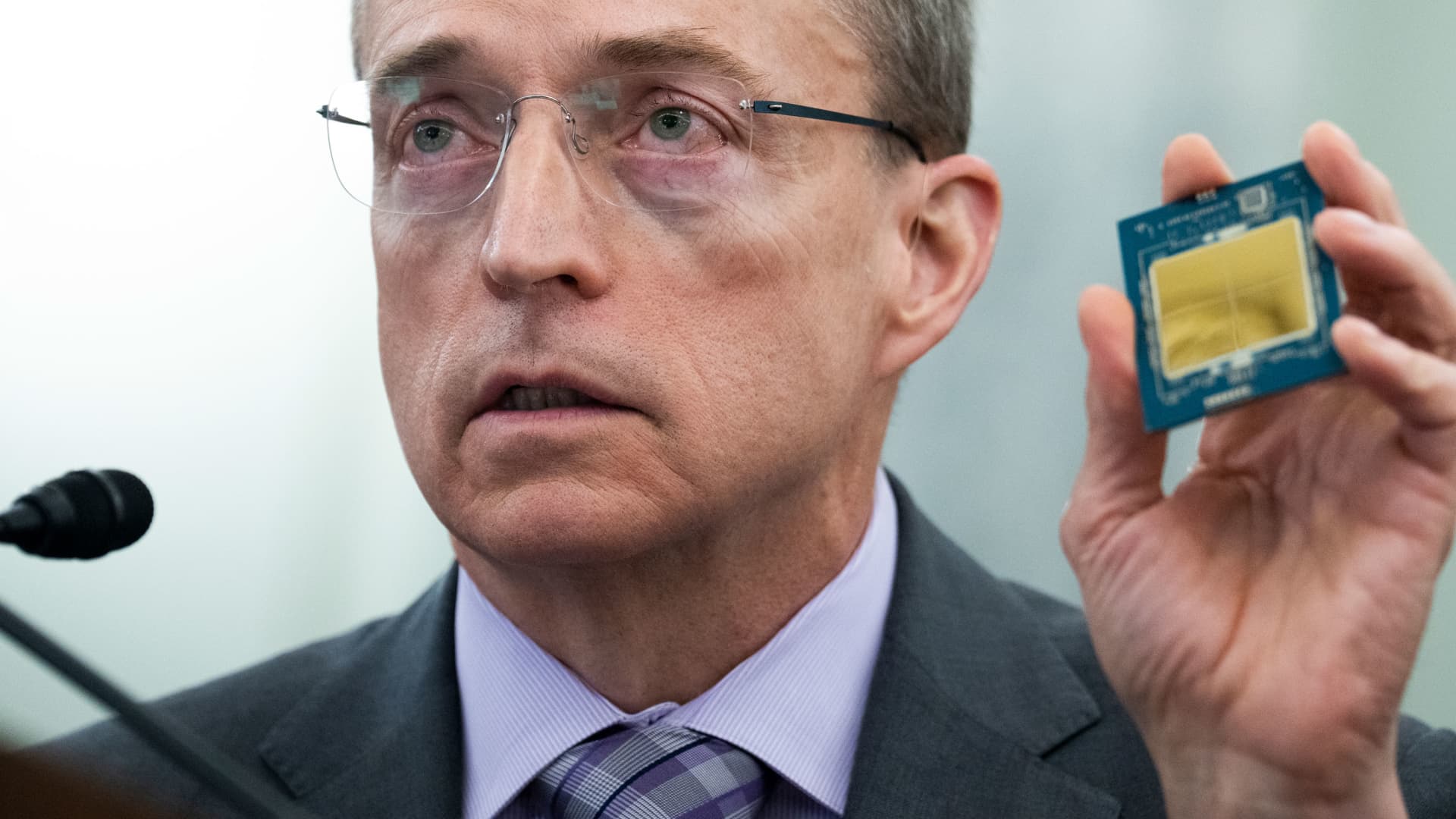

Pat Gelsinger, CEO, of Intel Corporation, testifies during the Senate Commerce, Science, and Transportation hearing on semiconductors titled Developing Next Generation Technology for Innovation, in Russell Senate Office Building on Wednesday, March 23, 2022.
Tom Williams | CQ-Roll Call, Inc. | Getty Images
Intel reported second-quarter earnings on Thursday, including a return to profitability after two straight quarters of losses, and a stronger-than-expected forecast.
Intel shares rose 7% in extended trading.
related investing news
Here’s how Intel did versus Refinitiv consensus expectations for the quarter ending July 1:
- Earnings per share: $0.13, adjusted, versus 3 cents loss per share expected by Refinitiv.
- Revenue: $12.9 billion, versus $12.13 billion expected by Refinitiv.
For the third quarter, Intel expects earnings of $0.20 per share, adjusted, on revenue of $13.4 billion at the midpoint, versus analyst expectations of 16 cents per share on $13.23 billion in sales.
Intel posted net income of $1.5 billion, or earnings of $0.35 per share, versus a net loss of $454 million, or a loss of 11 cents per share, in the same quarter last year.
Intel CFO David Zinsner said in a statement that part of the reason that Intel’s report was stronger than expected was because of the progress it has made towards slashing $3 billion in costs this year. Earlier this year, Intel slashed its dividend and announced plans to save $10 billion per year by 2025, including through layoffs.
Revenue fell to $12.9 billion from $15.3 billion a year ago, marking the sixth consecutive quarter of declining sales for the company.
Here’s how Intel’s business units performed:
- Intel’s Client Computing group, which includes the company’s laptop and desktop processor shipments, fell 12% annually to $6.8 billion.The overall PC market has been slumping for over a year.
- Intel’s server chip division, which is reported as Data Center and AI, declined 15% to $4.0 billion in sales.
- Intel’s Network and Edge division, which sells networking products for telecommunications, declined 28% to $1.4 billion.
- Mobileye, a publicly-traded Intel subsidiary focusing on self-driving cars, saw sales down 1% on an annual basis to $454 million.
- It reported $232 million in revenue for its foundry business, Intel Foundry Services, that makes chips for other companies.
Intel’s gross margin was nearly 40% on an adjusted basis, which beat the company’s previous forecast of 37.5%. Investors want to see Intel’s gross margins expand even as it invests heavily in manufacturing capability.
In the first quarter, Intel posted its largest loss ever as the PC and server markets slumped and demand declined for Intel’s central processors. Intel’s results on Thursday beat the forecast that management gave for the second quarter at the time.
Intel management has told investors that the firm’s turnaround will take time and that it is aiming to match TSMC‘s chip manufacturing prowess by 2026, which would enable it to bid to make the most advanced mobile processors for other companies, a strategy that the company calls “five nodes in four years.”
Intel said on Thursday that it remained on track to hit those technological goals.




